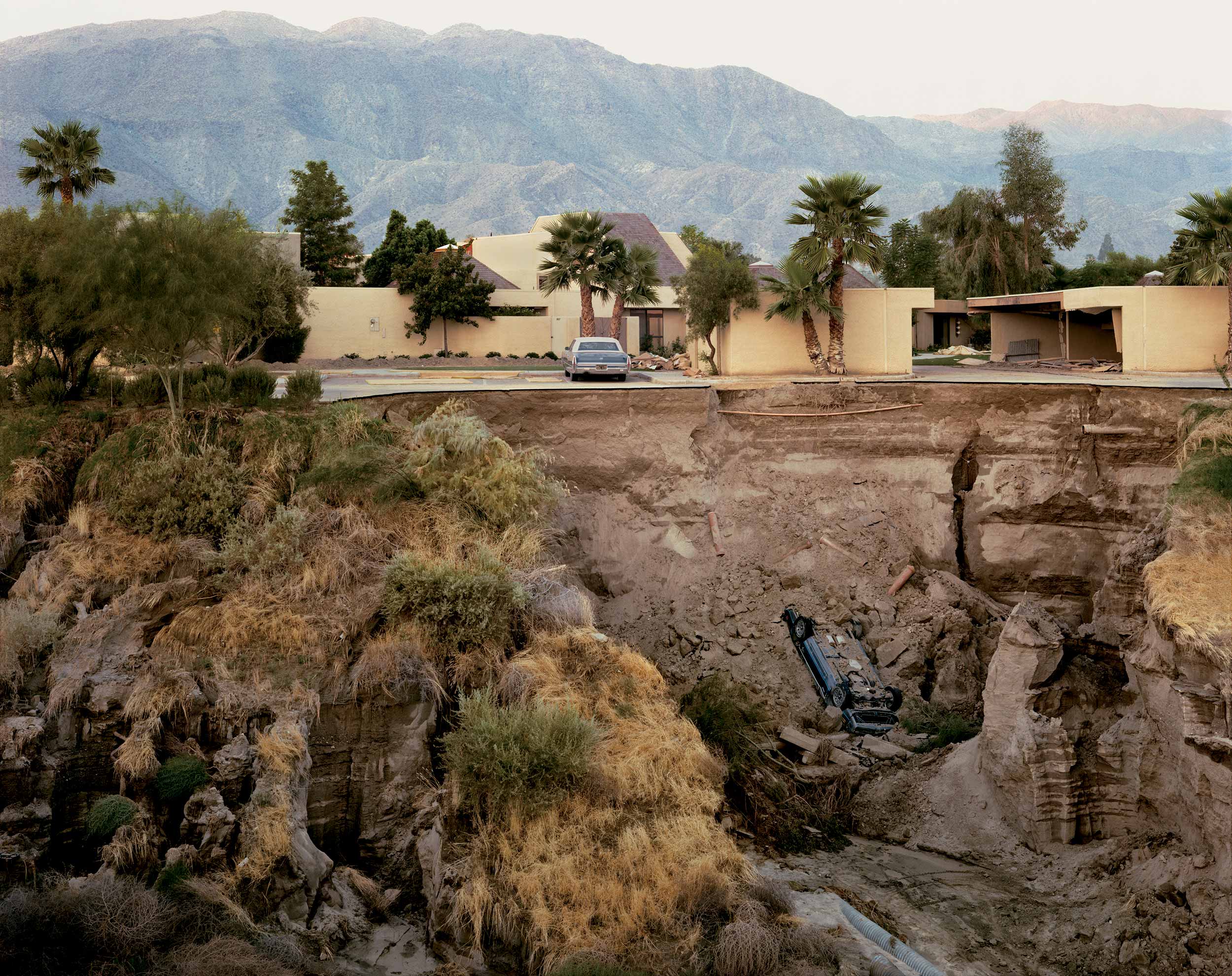
For Contact Sheet, we ask a photographer about the unseen story around a frame that defines their work
Date taken: July 1979
Location: Rancho Mirage, California
I was in Los Angeles when I heard about the flash flood in Rancho Mirage. I drove out in this Volkswagen camper, with no air conditioning. It was 120 degrees outside. Because it was so hot, I needed to keep the photography film cool, but all the power was out due to the flooding. Luckily, the local fire department had a backup generator, and they agreed to store them. I went out and walked all day and returned at night, when they asked if I had seen the Trans Am. I hadn’t seen it because so many streets were closed. They took me out at night on a fire engine, and they used the big spotlight to shine down into the ravine to show me the car.
After two or three hours on a payphone with the head of the Red Cross who controlled the disaster area, I finally got permission to access the site. In Los Angeles during the summertime, the light is so harsh that you have to shoot before dawn. After four and half hours of sleep, I went out on a bridge and took this picture.
The picture was taken while I was traveling for a year throughout the United States on a Guggenheim Fellowship. I saw this built-up landscape and you had to wonder, “What is going to be the consequence of all this stuff?” Steel mills were putting out large quantities of smoke and factories were producing large amounts of pollution. I had this nagging question in my mind, “Could there be enough pollution that it would hurt the world’s atmosphere?”
Before the flash flood, I had been up in Oregon where 51 whales beached and died. When I was traveling north towards Seattle, an elephant escaped from a training farm, so I took photographs. The elephant picture and the beached whale picture were taken within a week of each other. They’re co-relatives for this notion that we are disturbing the Earth.
I always used to say, “Just when utopia is squarely in view, that’s when the dystopian forces would win out.” I said that without real belief in what I was saying. Now, unfortunately, I don’t think that’s such a bad opinion. Climate change is by far the gravest problem that humanity has ever faced. To deal with climate change, there needs to be a change with human nature. As the storms get fiercer and the weather changes, more and more disasters will be happening everywhere in the world. For me, the flash flood in Rancho Mirage evokes all of the disasters that are going to happen because of extreme weather. I wish that wasn’t the case.
Joel Sternfeld is the guest artist and curator of ‘Landscapes after Ruskin: Redefining the Sublime’, an exhibition opening at the Grey Gallery at New York University on April 18th, with a reception from 6PM-8PM. Grey Art Gallery, New York University, 100 Washington Square East, New York, NY 10003.






